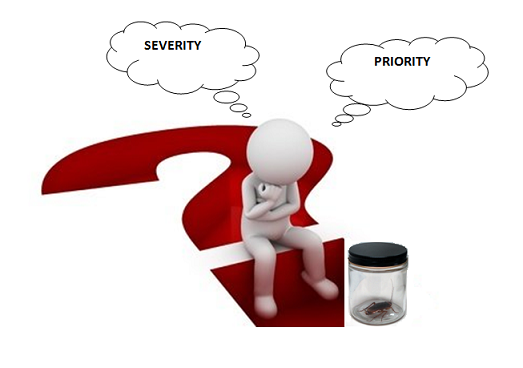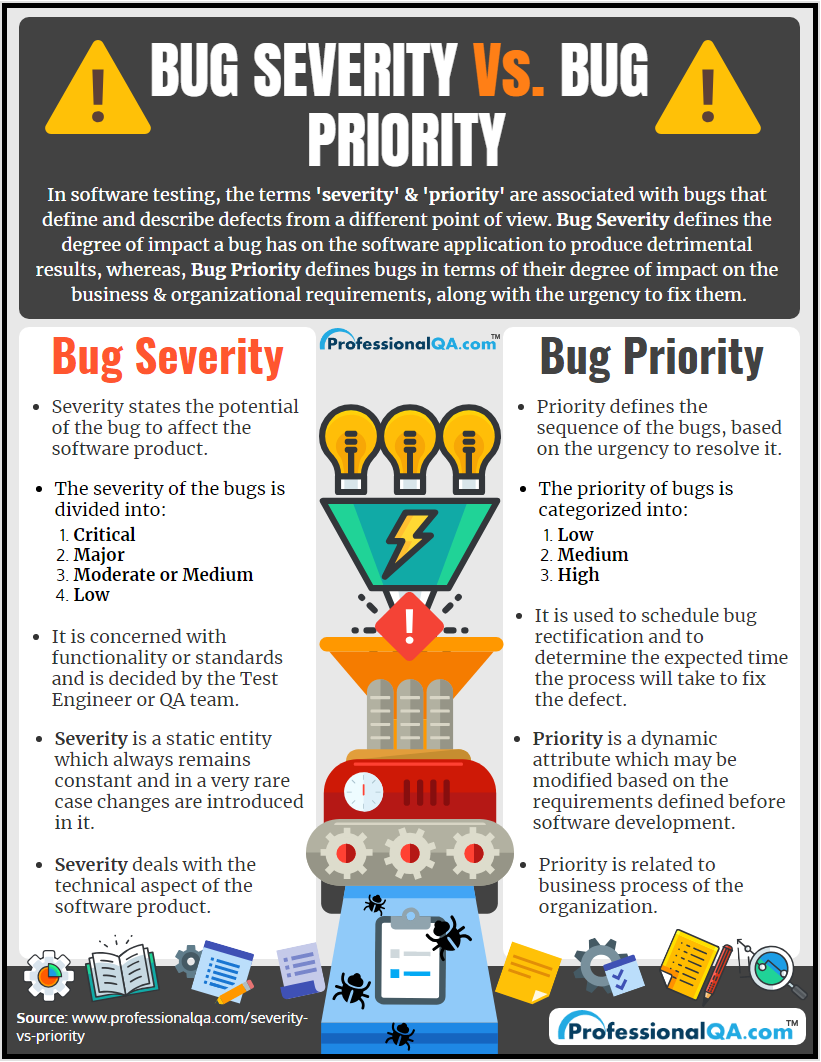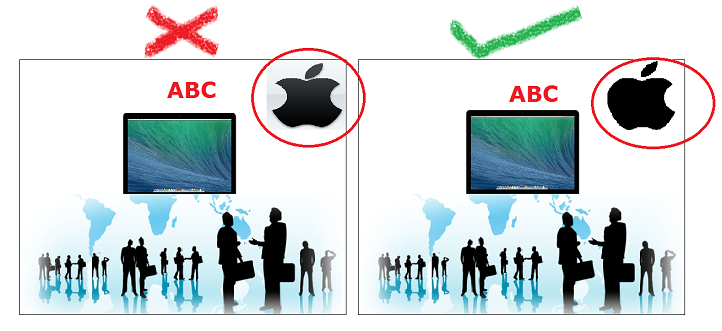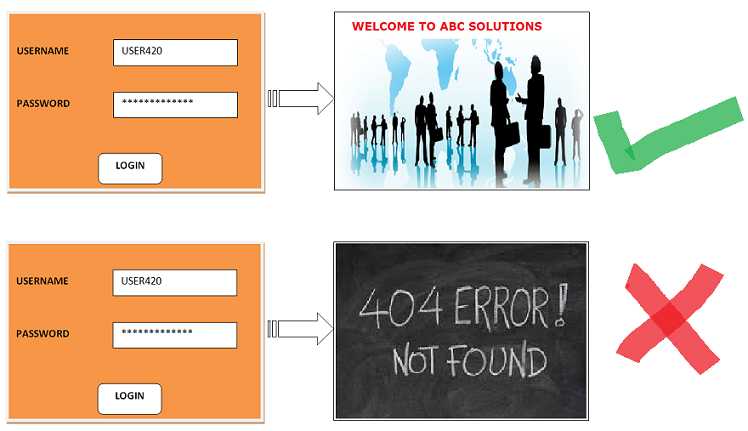

In the field of software testing, the terms "severity and priority" are the metric tools associated with the bugs that defines and describes bug from different point of view. Let's have a small introduction of bug severity and bug priority, before diving into severity vs priority .

Bug Severity defines the degree of impact of a bug on a software application to produce detrimental results. Greater the severity, larger would be the impact on the functionalities.
Unlike, bug severity, bug priority defines a bug in the terms of its degree of impact on the business & organizational needs and requirements along with the urgency to fix that bug. Higher the priority, sooner the bug will be resolved.

Below given are some of the considerable points, which make severity and priority different to each other.
| Severity | Priority |
| 1. Severity states the potential of the bug to affect the software product. | 1. Priority defines the sequence or order of the bugs based on the urgency to correct or resolve it. |
2. Usually, there are 4 different terms to measure the severity of the bug.
|
2. It may be categorized into 3 different types.
|
| 3. Severity concerns with the functionality or standards | 3. Priority is used to schedule the task for resolving and fixing the bugs. |
| 4. Severity is a static entity which always remains constant and in a very rare case changes are introduced in it. | 4. Priority is a dynamic attribute which may be modified based on the requirements. |
| 5. It imparts the seriousness and threat of a particular bug over the software product. | 5. It reflects the expected time to take up and fix a particular defect. |
| 6. Severity is decided by the Test Engineer or QA team. | 6. Priority is based on the results of technical meetings and directions received from the project manager or client. |
| 7. It involves user needs. | 7. It consists of business needs. |
| 8. Generally, no order is followed for resolving the bugs. Even the bug with low severity may be put up first for correction. | 8. It resolves the defects in a proper sequence based on the priority i.e. High → Medium → Low. |
| 9. A bug with low severity may have high priority, and high severity may have low priority. | 9. It is possible that the defects assigned with the high priority may be of low severity and the one with low priority have critical severity. |
| 10. Severity deals with the technical aspect of the software product. | 10. Priority is related to business process of the organization. |
Let's go through an example to understand the critical or low severity & high or low priority.
A website has been developed for an e-commerce organization. Upon testing the websites, following bugs/defects were detected:
1st defectWrong design or presentation of company's logo on the website.

The Login page could not be directed to the Home page even providing valid & correct, username and password.

The paragraph pertaining to the company's description on the website consisting of minor spelling mistakes.

Now, coming to the severity and the priority of these defects.
1st defect may be seen as of low severity as it would not affect the working of the website but may be put in the basket of high priority as the logo will be reflecting the brand image & objectives of the company at first sight to their customers or users.
As 2nd defect involves the issue with the login and home page which are the two significant modules or feature of the website, therefore 2nd defect may be seen as of high severity. The login page is an entry point for a customer or user to explore the website, thereby, this defect may be considered for high priority in order to resolve it as soon as possible.
Accordingly, 3rd defect may be seen as of low severity and low priority.
Suppose if there is banking application that is able to calculate daily,monthly,quarterly report but fails to compute or calculate yearly report. This is a high severity fault but low priority because this fault can be fixed in the coming or next release.
You may also like to read our next article on bug triage which is performed to manage test resources and requirements based on defect severity and priority.
Advertisement: